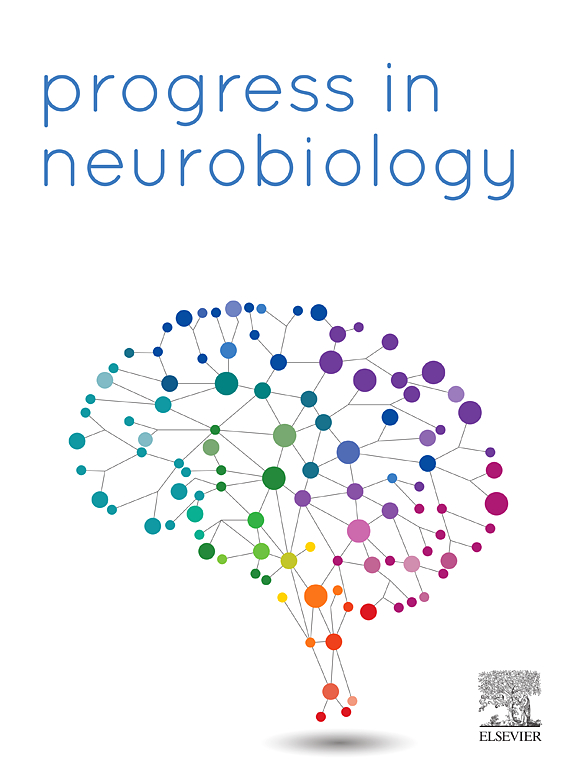在目标导向行为中,不同类型的细胞在不同的前额皮质区域实现多种编码方案。
IF 6.1
2区 医学
Q1 NEUROSCIENCES
引用次数: 0
摘要
复杂环境下的目标导向行为依赖于前额叶(PF)微电路产生、维持工作记忆(WM)和监测选择。然而,WM和选择监测背后的细胞机制仍然存在冲突,而且人们对其知之甚少。我们研究了不同的细胞类型如何代表选择,研究了编码量和时间编码方案,以区分背侧(PFdl)、眶(PFo)和额极(PFp)前额叶皮层的静态和动态方案,在两只执行提示策略任务的猕猴中。我们一致地观察到,在假定的中间神经元中,编码幅度高于假定的锥体神经元,并且在PF区域中存在动态编码方案。然而,假设的锥体神经元表现出异构的编码方案,在PFdl中从静态到动态,从WM到监测。在监测过程中,PFp是唯一具有静态方案的区域,PFo表现出类似的动态方案。我们的研究结果揭示了由锥体神经元控制的PF微电路中丰富的种群动态。本文章由计算机程序翻译,如有差异,请以英文原文为准。
Cell types implement multiple coding schemes in distinct prefrontal cortex areas during goal-directed behavior
Goal-directed behavior in complex environments relies on prefrontal (PF) microcircuits to generate, maintain in working memory (WM) and monitor choices. However, the cellular mechanisms underlying WM and choice monitoring remain conflictual and poorly understood. We investigated how distinct cell types represent choice, examining both coding magnitude and temporal coding schemes to distinguish between static and dynamic schemes across dorsolateral (PFdl), orbital (PFo), and frontopolar (PFp) prefrontal cortex in two macaques performing a Cued Strategy task. We consistently observed in putative interneurons both a higher coding magnitude than putative pyramidal neurons and a dynamic coding scheme across the PF areas. However, putative pyramidal neurons showed heterogeneous coding schemes, which in PFdl shifted from static to dynamic from WM to monitoring. PFo showed a similar dynamic scheme, and PFp was the only area with a static scheme during monitoring. Our results reveal rich population dynamics in PF microcircuits governed by pyramidal neurons.
求助全文
通过发布文献求助,成功后即可免费获取论文全文。
去求助
来源期刊

Progress in Neurobiology
医学-神经科学
CiteScore
12.80
自引率
1.50%
发文量
107
审稿时长
33 days
期刊介绍:
Progress in Neurobiology is an international journal that publishes groundbreaking original research, comprehensive review articles and opinion pieces written by leading researchers. The journal welcomes contributions from the broad field of neuroscience that apply neurophysiological, biochemical, pharmacological, molecular biological, anatomical, computational and behavioral analyses to problems of molecular, cellular, developmental, systems, and clinical neuroscience.
 求助内容:
求助内容: 应助结果提醒方式:
应助结果提醒方式:


